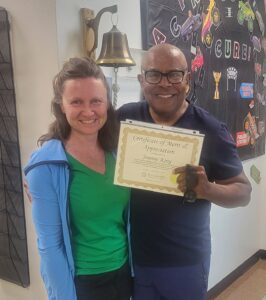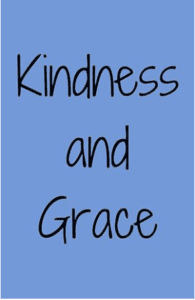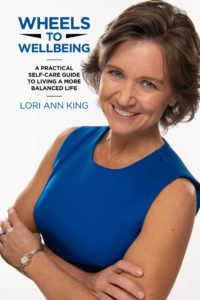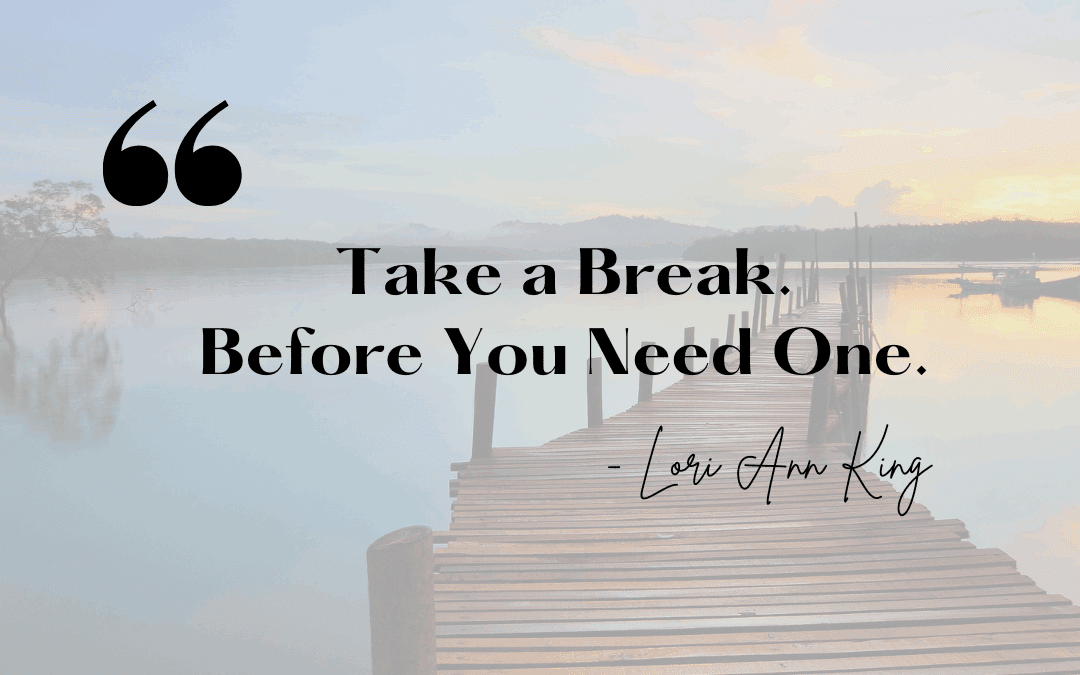Lately, my days have started with deep rest and intentional slowness. A good night’s sleep. A hot beverage on the porch. Time to read, journal, and watch the sun come up. I take a short stroll to the park, kick off my shoes, and stand barefoot in the grass—a grounding practice I’ve come to love.
I enjoy making lunch for Jim and me before he heads to work, and my afternoons are filled with more rest, reflection, and care: therapy, massage, chiropractic, and acupuncture sessions. Evenings include Hot-Bikyasa yoga and quiet time when Jim gets home.
Some days, you’ll find me writing at my personal computer at the kitchen table—but not at my work computer. My home office is currently off-limits for anything that feels like work.
Yes, I’m on an official break—and truthfully, it was overdue.
I had found myself burned out, overstimulated, and overwhelmed.
I’m incredibly grateful for this time away. And I’m learning that I need to be more intentional about how and when I take a break.
So what does “taking a break” mean?
 Right now, it means extended time off from work. In December, we learned that Jim would need eight weeks of radiation due to a rising PSA level. We’d already navigated prostate cancer back in 2020–2021 and hoped it was behind us. We thought his double hip replacement would be next, but radiation took precedence.
Right now, it means extended time off from work. In December, we learned that Jim would need eight weeks of radiation due to a rising PSA level. We’d already navigated prostate cancer back in 2020–2021 and hoped it was behind us. We thought his double hip replacement would be next, but radiation took precedence.
Meanwhile, I was already on the edge. I had been working long hours, losing the sense of balance I try so hard to model. Burned-out Lori? Not the most fun.
The irony? I know how important breaks are. I’ve written about it in my self-care guide Wheels to Wellbeing. There’s an entire chapter titled “Take a Break.”
Still, I’m giving myself grace. We all need reminders to live with intention. Some seasons pull us away from what we need to feel grounded and whole. The good news? We can always recalibrate.
Two Ways I’m Taking Breaks More Intentionally:
1. Take time off strategically and often.
Hourly:
If you sit or stand at a computer all day, build in mini-pauses. A quick stretch. A bathroom break. A breath of fresh air. A five-minute walk. These tiny resets matter—and can help you return more focused and energized.
Daily:
Stop working through lunch. Avoid those start-early, end-late marathons unless absolutely necessary. Boundaries help protect your energy—and your sanity. Rest isn’t wasted time; it’s an investment in your tomorrow.
Weekly:
Last year, Jim worked as a live-in caregiver, 24/7, for over five months. It was brutal. But it was short-term, and it changed our financial picture in powerful ways. Now, we cherish weekends. Protect your downtime like the precious resource it is.
Monthly:
Take a long weekend. One extra day—Friday or Monday—can restore your spirit. Your nervous system will thank you.
Quarterly:
If you have vacation time, use it. Don’t hoard it. Take a full week off each quarter if you can. Or do the math: divide 52 by the number of weeks you’re allowed off, and space them out intentionally. Regularly scheduled breaks should be part of your wellness strategy.
🧠 Evidence-backed insight: Research shows that even short, well-structured breaks throughout the workday can boost energy, improve focus, and reduce fatigue. According to Harvard Business Review, breaks are most effective when they are taken earlier in the day, involve movement or time outdoors, and are chosen voluntarily. Source
2. Take a break from habits that don’t serve you.
Sometimes “taking a break” means removing something, at least temporarily. These pauses can help you reset your body and mind, reveal hidden stressors, and increase your overall well-being.
Here are a few worth considering:
Caffeine
Reducing caffeine can improve sleep, lower anxiety, and help regulate blood pressure. For some, caffeine can mask exhaustion instead of addressing its root cause. Taking a break from it can reveal how your body truly feels. And give your nervous system a much-needed rest.
Sugar
Cutting back on sugar can help stabilize your energy levels and mood. It also supports immune health, reduces inflammation, and lowers your risk of chronic diseases. Many people report clearer skin, better digestion, and fewer cravings when they take a break from sugar.
Alcohol
Alcohol can interfere with sleep, elevate anxiety, and strain your liver. Even a short break—like a “dry month”—can improve clarity, mood, and gut health, and help recalibrate your relationship with drinking.
Weed
For some, cannabis is therapeutic. For others, it can lead to mental fog, dependency, or emotional numbness. Taking a break can help you evaluate its true role in your life and whether it’s helping or hindering your wellness.
Gluten, Dairy, or Other Common Allergens
Food sensitivities can show up as fatigue, bloating, skin irritation, joint pain, and more. Removing potential triggers, even temporarily, can give your body a chance to reset and help you identify what’s truly nourishing vs. depleting.
Years ago, an acupuncturist encouraged me to try an elimination diet. I discovered that when I removed gluten, my digestion improved dramatically. While I’m not celiac and can tolerate small amounts, I always feel better when I’m 100% gluten-free.
Since then, I’ve experimented with going without caffeine, sugar, and alcohol—each with similar results. My body felt lighter. I was less irritable and emotional. My focus sharpened. While I still indulge once in a while, I’ve found I’m living my best life when I don’t.
Note: You can certainly research the above substances to explore the potential harm they may be causing you. But honestly, you don’t need my advice, or an expert’s, to start tuning in. You just need your own. Give yourself permission to live with curiosity. Put on your detective hat. Try removing one thing for three weeks. You may experience some side effects at first, but in the long run, you might just feel better. Don’t notice a difference? No harm done. You can always add it back in.
Taking a break isn’t indulgent. It’s essential.
Not every season allows for extended time off. But every season offers an opportunity to pause, reset, and listen to what your body, heart, and mind truly need.
Take a break—before you need one.
Want more strategies for living a balanced life?
Check out my book, Wheels to Wellbeing: A Practical Self-Care Guide to Living a More Balanced Life — filled with real-world tools to help you prioritize your wellbeing, live with intention, and thrive in every season of life.
©2025 Lori Ann King
Additional Reading:
From my blog:
Buy Now:

 Buy Wheels to Wellbeing
Buy Wheels to Wellbeing – the ultimate guide to showing yourself kindness.
– the ultimate guide to showing yourself kindness.
Buy Kindness and Grace Journal
Buy Love, Gratitude, and Kindness Journal
Love what you’re reading? For just $1 a month, you can help me cover my costs and keep the words coming! Contribute now.


